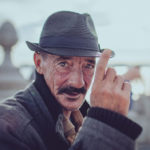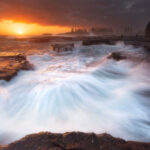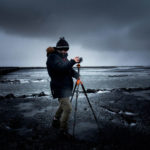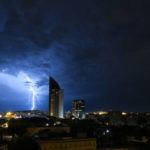One of the hardest obstacles when shooting outdoors is balancing a correct exposure in extreme sunlight. When there’s heavy white snow on the ground, it’s even harder. Luckily, there’s a mathematical equation, dubbed the Sunny 16 Rule, that solved the problem over 50 years ago. Check out Bryan Peterson explaining it here:
What is the Sunny 16 Rule?
It’s simple, really. The Sunny 16 Rule states:
“On a sunny day, set aperture to f/16 and shutter speed to the reciprocal of the ISO setting for a subject in direct sunlight.”
In other words, on a bright sunny day, with your camera on manual mode, set your aperture to f/16, then adjust your ISO to 200 and shutter speed to 1/200. Or, staying at f/16, set your ISO to 100 and your shutter speed to 1/100, and so on. Bryan is using a Nikon D800E, but this works with any DSLR–or film camera, for that matter.

Bright sunny days can be deadly for photographs risking under- or over-exposure.
It’s a great tip for beginner photographers who are dealing with harsh outdoor conditions. And the rule can be elaborated upon for different lighting conditions. Apply the same rule with an aperture of f/8 on an overcast day, for example. Using the rule, you should achieve a perfect exposure with this setting, regardless of a light meter.
“I’m not looking through the camera. I don’t need to look through the camera. Because I know, mathematically, the calculations that were done 50 years ago about exposure—without benefit of a light meter—still apply today.”
Check out Bryan’s images below. For the first, he didn’t even glance at the light meter; he just lined up his shot and clicked.

Aperture f/16, ISO 200, Shutter Speed 1/200
Now see what his in-camera light meter recommended he shoot—a shutter speed of 1/640.

Aperture f/16, ISO 200, Shutter Speed 1/640
Cameras’ automatic settings are geared toward grayscales. They aren’t built to manage extreme blacks and whites. Just another example of how the camera isn’t always right.
Like This Article?
Don't Miss The Next One!
Join over 100,000 photographers of all experience levels who receive our free photography tips and articles to stay current:






If Brian was shooting at mid day, his exposure would actually be f22 not f16, but as he’s shooting later in the day and The Sun is much lower in the sky, it looses intensity.
The Sunny f16 rule really only applies correctly to light from the months between April and September in the Northern Hemisphere, when The Sun scibes a higher arc through the sky. In Autumn and Winter months The Sun is much lower in the sky and again looses intensity through dispersion in the atmosphere.
It’s more accurate to judge exposure on the definition of shadows, but below f5.6 when they are not visible and espcially in Autumn and Winter with heavy cloud cover, then you’ll be guessing the exposure.
Use a light meter, it’s accurate all the time.
I am replying to the comments about the “limitations” of shooting at f/16, not to the article.
The sunny 16 rule gives you a baseline. That’s all it is.
If, to take the same example as in the article, the rule would give you a “correct” exposure of f/16 – 1/200s – ISO 200, you would achieve the same exposure at f/11 – 1/400s – ISO 200, or f/8 – 1/800s – ISO200, or f/22 – 1/50s – ISO100, or……
Well I hope you get it, it is just a reference point and you change the parameters from there based on what your priorities are.
The problem as I see it with the ‘Sunny 16’ rule is using f16. Most lenses will start to suffer from diffraction blur by f16. While it may be safe it isn’t by any means going to give you the best quality available.
I completely understand why this is relevant for film cameras but now we have instant previews and histograms it takes no time at all to take a reference shot at an optimal aperture and go from there.
With that said, this is a good tip for those getting to grips with extreme exposures and those still looking for snaps on film.
Always heard of the Sunny 16 Rule, but never saw it defined, odd.
Anyway, EASY tip to remember. And as far as F16 being a magic aperture, Bryan does state that this is a base rule, and how to adjust accordingly for different apertures.
I wonder how many people will go out and say you can’t shoot in snow unless you shoot at f/16? I always get the best results around f/5.6 to f/11. Every situation is going to be different…unless f/16 really is magic. How do I get a magic camera?
This is awesome and quite incisive